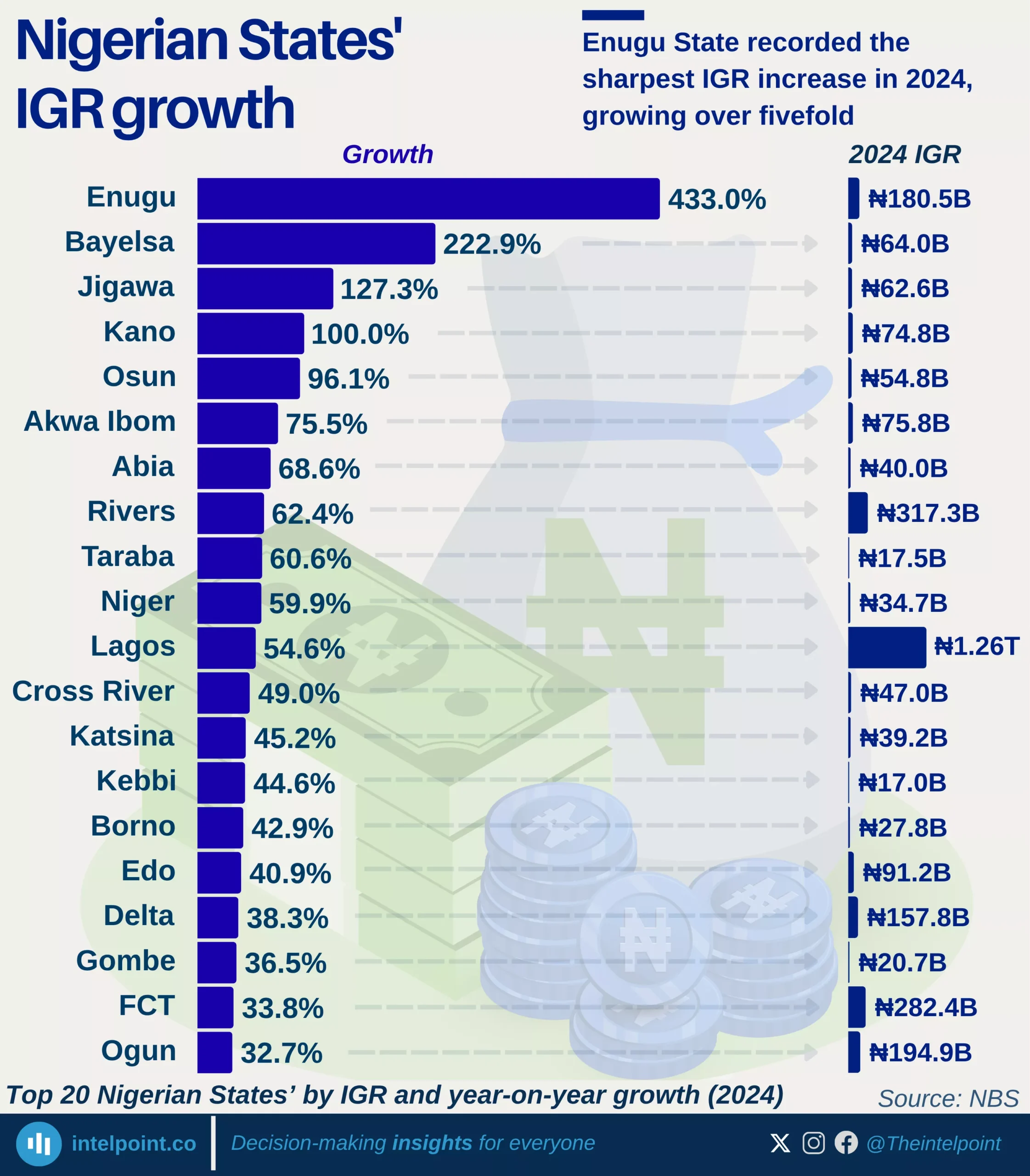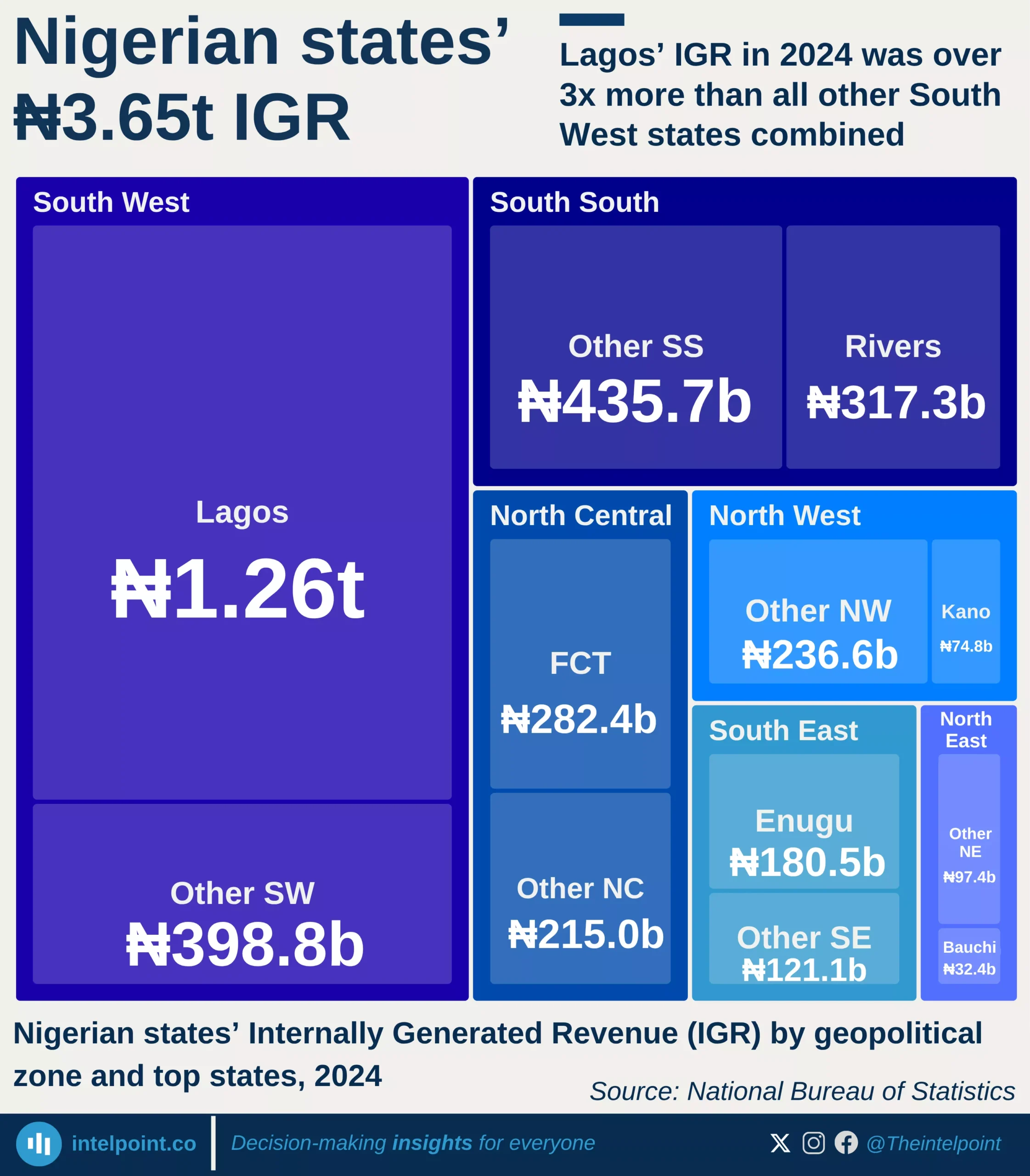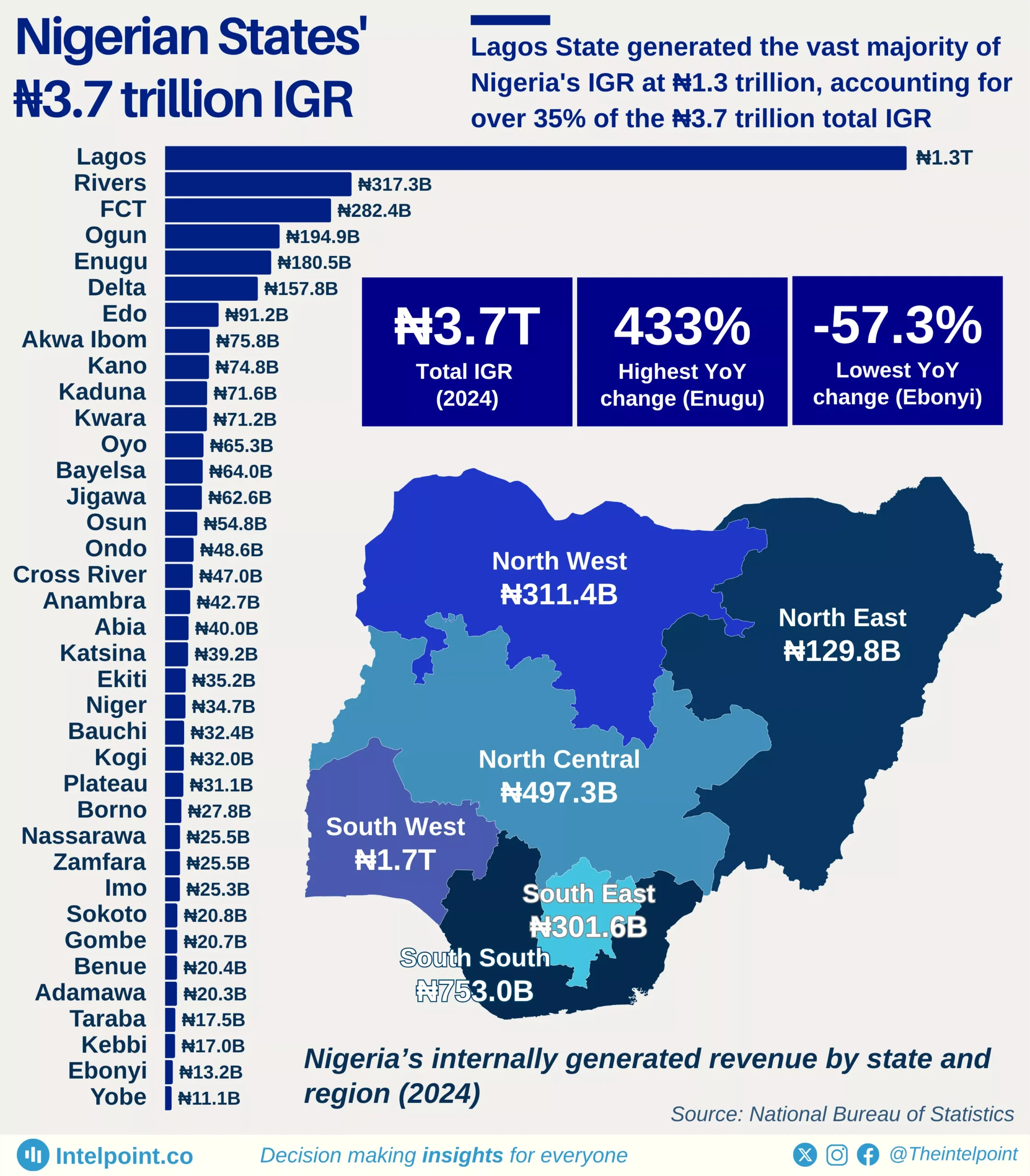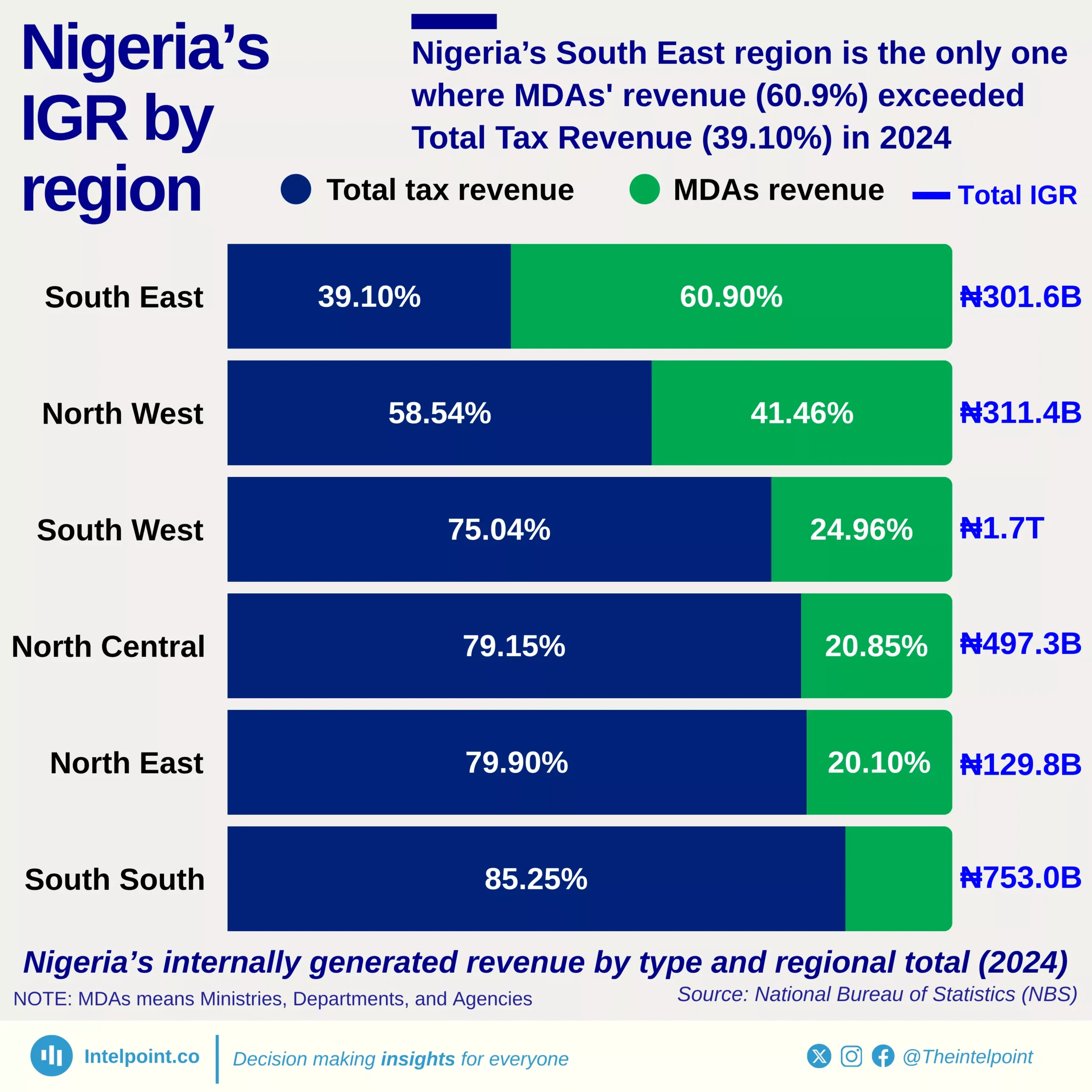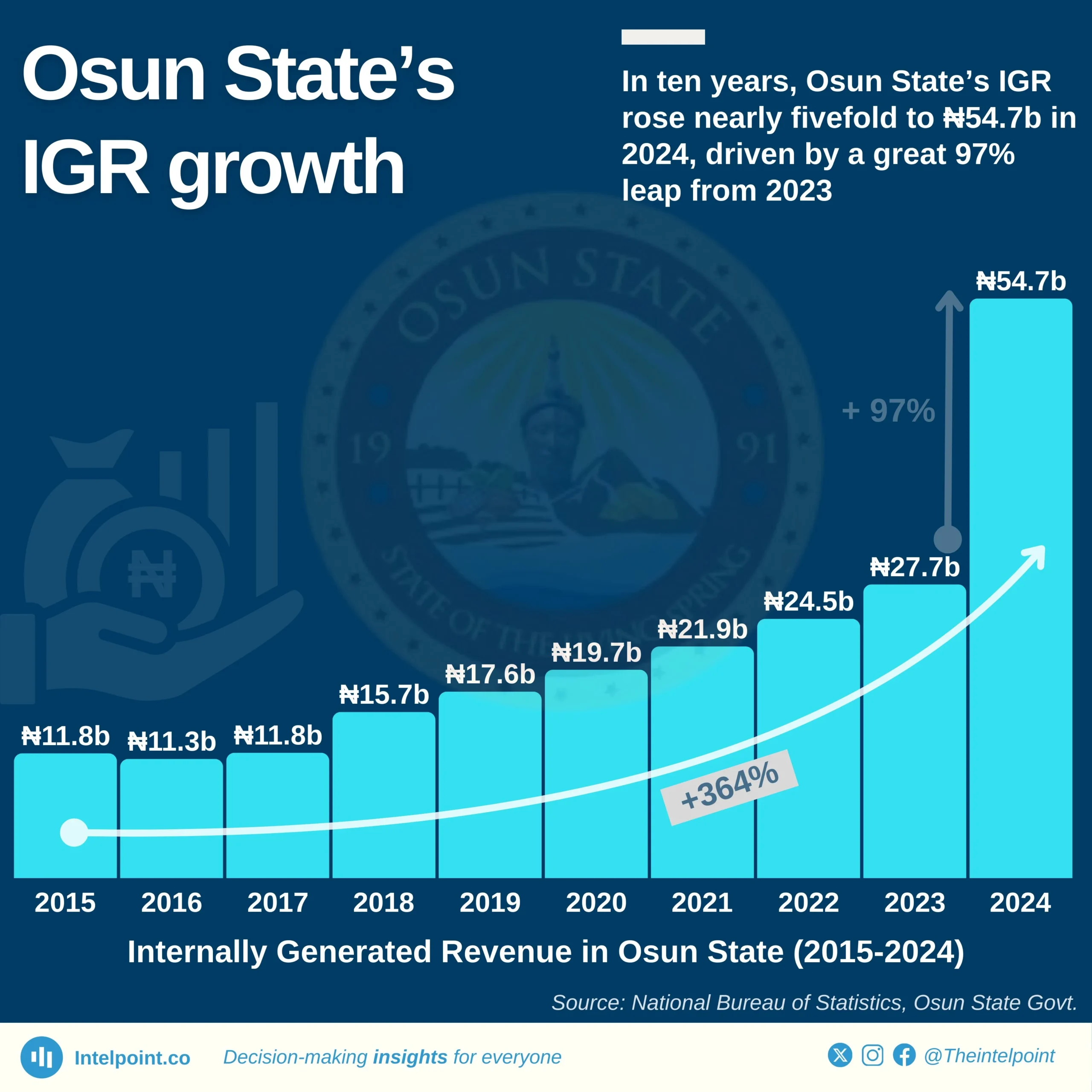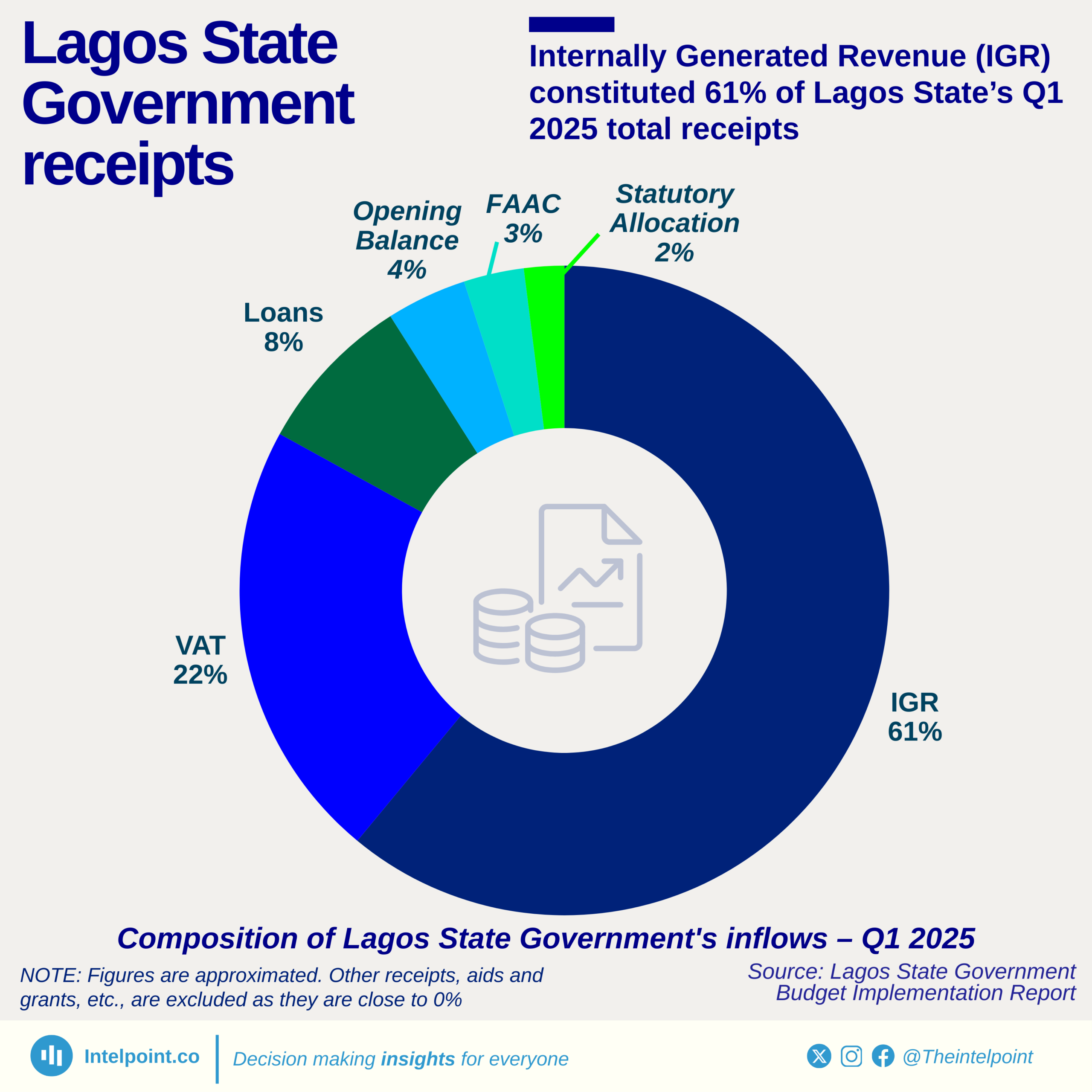Key Takeaways:
Between 2011 and 2016, Nigeria saw its total revenue as a share of GDP drop dramatically from 17.73% to 5.12%. This reduction can be linked to factors such as the volatility of oil revenues, which play a crucial role in Nigeria's economy, as well as challenges in domestic revenue mobilisation.
The following years saw some gradual recovery, with the ratio climbing to 9.09% in 2022. While this is an improvement from the 2016 low, it remains considerably below the figures reached in the early 2010s and is nearly half of what the country realised in 2011.
